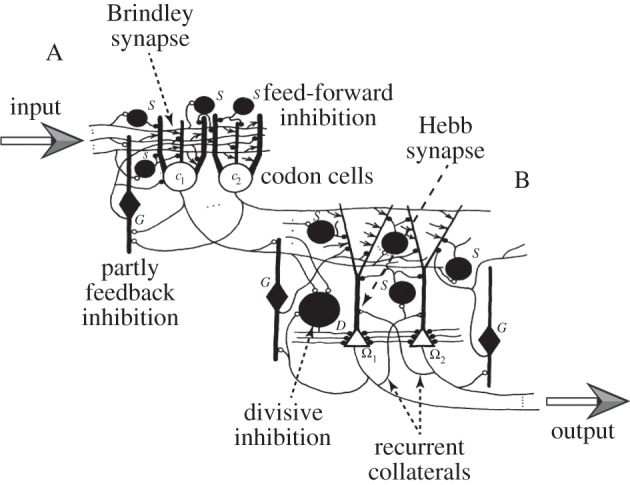Figure 2.

Schematic of a basic unit of Marr's simple memory model. The basic unit has two conceptual, connected parts, input (labelled A) and output (B). ‘A’ shows the horizontally running fibres from the input layer with modifiable Brindley synapses on cells of the intermediate layer (‘codon’ cells, of which two are shown, c1 and c2). Inhibitory interneurons control the threshold for codon cell firing so as to maintain a constant activity level. Neurons of type S and G supply feed-forward inhibition by the sampling of input fibre activity; those of type G also provide feedback inhibition by sampling the codon cell activity. Using feedback and feed-forward inhibition for controlling thresholds in this way was used by Marr in his cerebellum paper [1]. ‘B’ shows codon cell fibres with modifiable synapses on output cells Ω1 and Ω2. Collateral connections from one output cell to another are also indicated. The threshold of firing on the output cells is controlled by S and G interneurons, as above. In addition, the D cells innervate the soma to perform a division. Both subtraction and division are needed for correct threshold setting of the output cells, by means of which the correct simple representation is gradually recreated from a partial input cue. The return projection from output cells to input cells is not shown. Adapted from fig. 5 of Marr [3].
